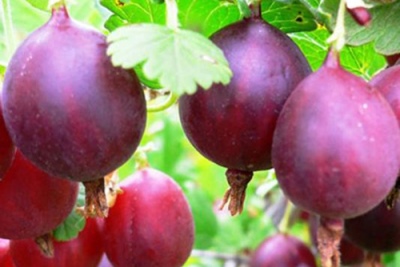
- Authors: V. S. Ilyin (South Ural Research Institute of Fruit and Vegetable Growing and Potato Growing)
- Appeared when crossing: Change x Chelyabinsk green
- Year of approval: 1999
- Growth type: medium-sized
- Description of the bush: slightly spreading, dense
- Escapes: medium, light green, matte, hairless, slightly curved
- Thorniness: weak
- Thorns: solitary, light green, of medium length and thickness, directed slightly downward, weak
- Sheet: large to medium, green, slightly shiny, medium density
- Spike location: located mainly in the lower part of the shoot
Cooperator is a gooseberry variety bred by Russian breeders. The variety obtained by crossing the varieties Smena and Chelyabinsk green was approved for use in 1999, and has been popular with summer residents for more than two decades.
Description of the variety
The presented variety has the following external characteristics:
the bush is medium-sized, dense, slightly spreading, poorly covered with thorns;
shoots of medium thickness, without edge, slightly curved;
leaves are large, glossy, medium in size, green in color;
thorns of medium length and thickness, weak, located slightly downward, their growth is concentrated mainly in the lower part of the shoot;
flowers are medium or small in size, yellow-green with a slight blush, located in two-three-flowered inflorescences.
Characteristics of berries
The fruits are large or medium in size, the weight of one berry can reach 8 g; develop in the shape of a pear, dark cherry in color, almost black. The skin is thin, but dense, therefore the presented variety is distinguished by good keeping quality and transportability.
Taste qualities
The pulp of the berries is juicy, the taste is sweet and sour, and is estimated at 5 points. Berries clearly reveal their taste when eaten fresh, and are also perfect for making jam or compote.
Ripening and fruiting
The cooperator belongs to the mid-late varieties. This is a self-pollinated variety, but, according to the reviews of experienced gardeners, the neighborhood with a bush of another variety can increase yields by 30%.
Yield
It is a high-yielding variety, yielding an average of 12 t / ha or 90-130 c / ha of berries.
Landing
When planting a bush, use the following tips.
Choose clay, loamy, sandy loam, or sandy soil for planting. Avoid acidic, waterlogged, and cold areas.
Place the plant in a sunny location, but protected from drafts.
Plant after sunset, and in the morning, loosen and mulch the root circle.
The best time for planting is the second half of autumn.
Planting consists of several stages.
Dig a planting hole 50-60 cm deep and 45-50 cm wide.
Add a mixture of rotted manure, superphosphate and potassium sulfate to the bottom.
Gently spread the roots of the shoot and plant it in the hole.
Deepen the root collar 2 cm.

Growing and care
The presented variety has high winter hardiness and tolerates drought well.It is allowed to grow in regions with a harsh climate, for example, in the Urals. To keep the plant comfortable, provide the following conditions.
Watering
The bushes are watered 2-3 times per season. Overflow threatens with the loss of the flavoring properties of the berries, as well as rotting of the root system. An adult bush needs to be watered only during a long absence of rainfall.
Top dressing
For the first three years, the plant will have enough of those fertilizers that were applied during planting. For adult shrubs, mineral and organic compounds are needed.
Loosening
The bushes of this variety are deep, so about 5 times per season the plant needs to be loosened to a depth of 3-5 cm. This will ensure air penetration to the roots.
Pruning
In the fall, it is required to eliminate dried and diseased shoots, as well as those older than 5-6 years. To increase the number of flowers and the size of berries, gardeners recommend pinching the tops of annual shoots.



Disease and pest resistance
The co-operator is resistant to American powdery mildew, but can sometimes be attacked by anthracnose, and also become a victim of the sawfly beetle. As a preventive measure, treat the bushes with boiling water or insecticides every spring, which will poison the hibernating insects. It is important to apply chemicals before the flowering phase, at least 25 days before the berries ripen. The culture will be protected from anthracnose by 1% Bordeaux liquid.

In order for the gooseberry to produce a good harvest, it is necessary to devote time to disease prevention.




































































